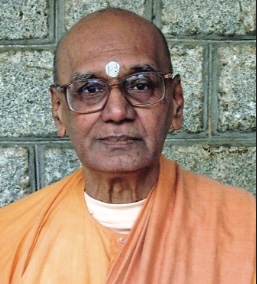BY CHOODIE SHIVARAM
After thirty-three patient years of research and writing, Swami Harshanandaji, head of Sri Ramakrishna Math in Bengaluru (as Bangalore is now known), has released A Concise Encyclopedia of Hinduism. Alphabetically arranged, the three-volume work covers the gamut of all things Hindu, from scripture, philosophy, mythology, festivals, rituals and sacraments, to pilgrim centers, archaeology and lives of great saints.
The collection runs a total of 2,064 pages. Illustrations are sparse–a few hundred line drawings and black-and-white photographs–but each volume has several pages of color photos at the back. The set is priced at Rs. 1,500 in India (e-mail: rkmblr_publi@vsnl.net) and about $150 in the US (temple@sfvedanta.org). It has sold briskly since its release in April, 2008. (If you search for the book online, do not confuse it with Klaus K. Klostermaier’s popular single-volume work of the same title, published in 1998.)
“The encylopedia is written in such a simple style that even an undergraduate student can understand it,” Swami Harshananda told me. His writing is indeed lucid and accessible. For example, in concluding a two-page article on “mind,” he writes, “The main purpose behind the study of the mind [in Hinduism] is to facilitate its ultimate purification leading to the Realization of the Atman or the Self. Though there are differences of opinion regarding its nature, the processes of purification are almost universally accepted.”
Swami, now in his late 70s, first came in contact with the teachings of Sri Ramakrishna and Swami Vivekananda in 1948 and joined the Ramakrishna Order. He hatched the plan for an encyclopedia of Hinduism in 1973 and started work in earnest two years later. He spent a year assembling topics, then commenced writing about them alphabetically by hand.
The most difficult entries, swami confides, were those of lesser-known philosophical systems. “Unless I understood them perfectly,” he explained, “I didn’t want to put them in writing. For instance, Chaitanya Mahaprabhu’s Achintya Bheda Abheda School and even Madhvacharya’s philosophy are quite tough. I had to study these systems and present them in a noncontroversial way.”
In the early years of the project, his duties as head of the Bangalore Ramakrishna Mission took up much of his time. “Later on,” he said, “as our monastic members became more senior, they were able to take greater responsibilities and–except for some policy matters–I was able to devote more time to the work. Generally, I would devote about three or four hours a day. Periodically, I would go to a small meditation retreat we have in Shivanhalli village for a week at a time and write up to ten hours a day. It was all done by the grace of the Holy Mother, Sri Sarada Devi, to whom I have dedicated the work.”
Asked what his conclusion was after completing such a comprehensive study of Hinduism, Swami responded: “After going through so many books and studying the subjects properly, I came to the conclusion that ours is a very great religion, a very wonderful religion. There is nothing that is wanting in it. It is like Sri Ramakrishna said of a mother feeding her various children. The basic materials are the same–rice is there, sugar is there, dal is there, milk is there. The mother of the house, depending upon the capacity of the children, prepares different dishes from these same ingredients. Just so, Hinduism has also given various methods of philosophical systems of sadhana (spiritual disciplines) and upasana (worship). Ultimately, all of them lead to the same sense of experience. Suppose I don’t like advaita, the nondualist philosophy. Then there is dvaita, dualism, or vishishtadvaita, between the two. If people are serious and sincere about their personal ethical and spiritual life, there is plenty of material in our religion. There is no need to search for it elsewhere. Hinduism is not a bundle of superstitions. It is a quite well organized, scientific religion. It was discovered and rediscovered by the various sages through contemplation and meditation. Only then they gave it to us. That is why our philosophical systems are called darshanas. They are not just intellectual philosophical systems. Darshana means seeing and experiencing. Through prayer and meditation they experience it and are able to see the truth through the inner eye and then present it in the way people can understand.”
Swami brings a love and respect to his subject which sets this encyclopedia apart from many produced by Western academics. Readers may, however, find his coverage of most topics necessarily but exasperatingly brief, and treatment of recent Hindu figures is spotty. Most importantly, there is no index to enable readers to cross-reference topics. That said, the book is a remarkable, useful and reliable reference, written by one who has a lifetime of first-hand knowledge and appreciation of Hinduism. PIpi


